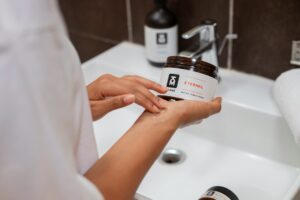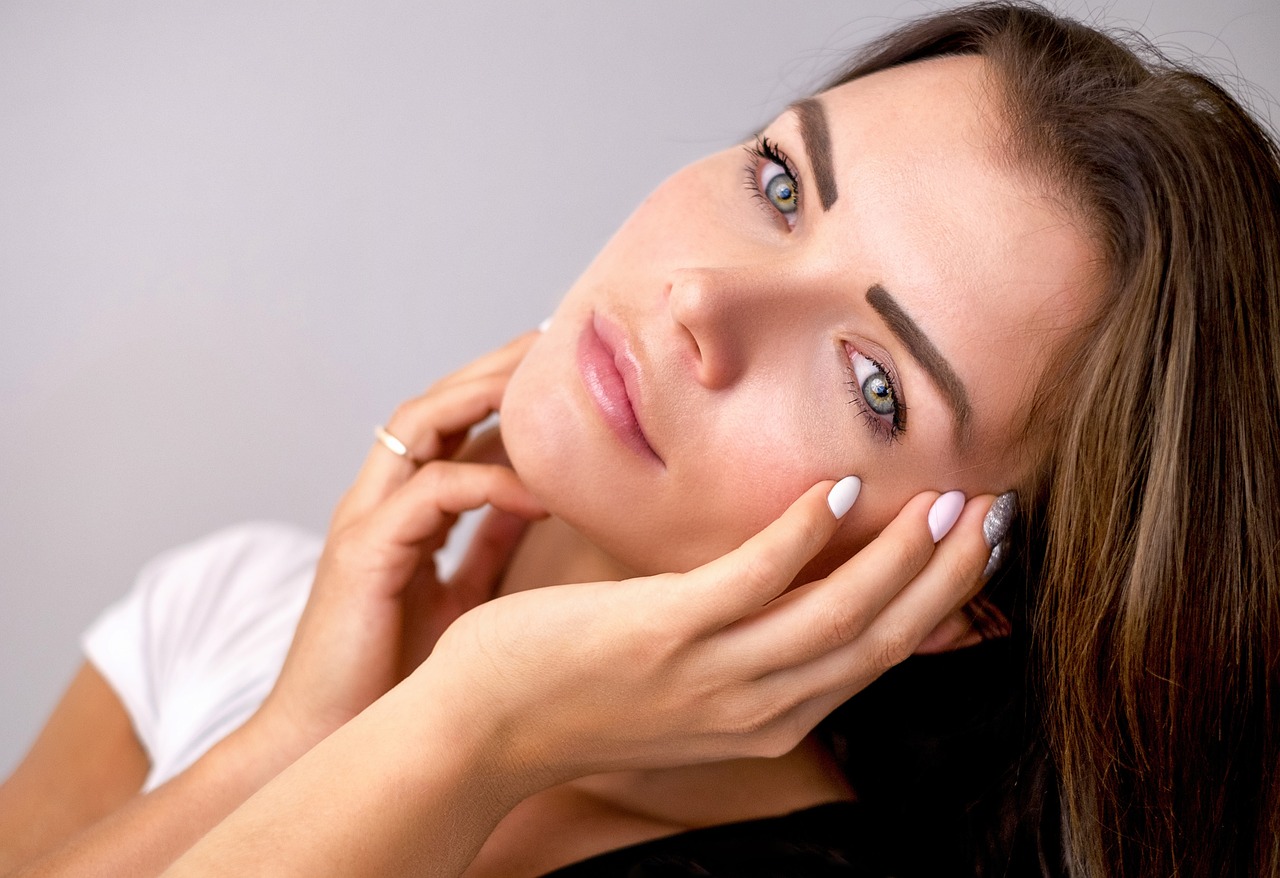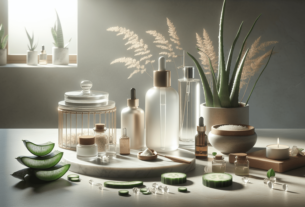Creating a skincare routine for the first time can feel like navigating a maze with endless product options and conflicting advice. But it doesn’t have to be that complicated! Whether you’re looking to improve your skin’s texture, reduce breakouts, or simply maintain a healthy complexion, building a skincare routine that suits your unique needs is the key. In this guide, we’ll break down the steps to help you craft an effective and personalized skincare regimen from scratch. Let’s dive in!
Why a Skincare Routine Matters
A consistent skincare routine is not just about aesthetics; it’s about maintaining the health of your skin. Your skin is your body’s largest organ and acts as a barrier against environmental factors like pollution, UV radiation, and bacteria. Taking care of your skin helps reinforce this barrier, addresses specific concerns, and prevents potential damage.
Benefits of a Regular Skincare Routine
- Prevents Skin Issues: A proper routine can prevent issues like acne, dryness, and premature aging.
- Improves Texture and Tone: Regular use of the right products can lead to smoother, more even-toned skin.
- Boosts Confidence: Healthy skin can significantly boost your self-esteem and confidence.
Understanding Your Skin Type

Before you begin, it’s crucial to identify your skin type, as this will determine which products and ingredients are best for you. The four main skin types are:
1. Oily Skin
Characterized by a shiny appearance, large pores, and frequent breakouts. Oily skin produces excess sebum, which can lead to clogged pores.
2. Dry Skin
Often feels tight, flaky, and may have visible lines or redness. Dry skin lacks sufficient moisture and may require more hydrating and nourishing products.
3. Combination Skin
Features both oily and dry areas, usually with an oily T-zone (forehead, nose, and chin) and dry or normal cheeks. It requires a balanced approach to skincare.
4. Sensitive Skin
Prone to redness, irritation, and reactions to certain products. Sensitive skin needs gentle, non-irritating products free from harsh chemicals and fragrances.
How to Identify Your Skin Type
- Wash Your Face: Cleanse with a mild cleanser and pat dry.
- Wait 30 Minutes: Do not apply any products. Observe how your skin feels.
- Analyze Your Skin:
- If it feels tight or dry, you likely have dry skin.
- If it appears shiny and feels greasy, you have oily skin.
- If it feels normal in some areas but oily in others, you have combination skin.
- If it becomes red or irritated easily, you have sensitive skin.
The Basic Steps of a Skincare Routine
Now that you know your skin type, it’s time to build your skincare routine. A basic routine involves three fundamental steps: cleansing, moisturizing, and protecting your skin with sunscreen. Let’s break down each step.
1. Cleansing: The Foundation of Any Skincare Routine
Cleansing is crucial because it removes dirt, oil, and makeup that can clog pores and lead to breakouts. For beginners, choosing a gentle cleanser suited to your skin type is essential.
Choosing the Right Cleanser:
- For Oily Skin: Opt for a foaming or gel-based cleanser with ingredients like salicylic acid to control oil and prevent breakouts.
- For Dry Skin: Look for a hydrating, cream-based cleanser with soothing ingredients like glycerin or hyaluronic acid.
- For Combination Skin: Choose a mild, balanced cleanser that doesn’t strip the skin.
- For Sensitive Skin: Use a fragrance-free, hypoallergenic cleanser with calming ingredients like chamomile or aloe vera.
How to Cleanse Properly:
- Wet your face with lukewarm water.
- Apply the cleanser in circular motions for about 30-60 seconds.
- Rinse thoroughly and pat your skin dry with a soft towel.
2. Moisturizing: Keeping Your Skin Hydrated
Moisturizing is essential for all skin types, even oily skin. It helps to lock in moisture, repair the skin barrier, and provide necessary hydration.
Choosing the Right Moisturizer:
- For Oily Skin: Choose a lightweight, oil-free moisturizer or gel-based hydrator that won’t clog pores.
- For Dry Skin: Look for a rich, cream-based moisturizer with ingredients like ceramides, shea butter, or squalane.
- For Combination Skin: Use a balanced moisturizer, or consider using different products for different areas of your face.
- For Sensitive Skin: Opt for a soothing, fragrance-free moisturizer with anti-inflammatory ingredients like calendula or oat extract.
How to Apply Moisturizer:
- Apply a dime-sized amount to your face.
- Gently pat and spread it over your skin, avoiding rubbing too harshly.
3. Sun Protection: The Non-Negotiable Step
Sunscreen is crucial in any skincare routine as it protects your skin from harmful UV rays, which can cause premature aging, hyperpigmentation, and skin cancer.
Choosing the Right Sunscreen:
- Choose a broad-spectrum sunscreen with at least SPF 30.
- For oily or acne-prone skin, opt for a non-comedogenic, matte-finish sunscreen.
- For dry or sensitive skin, select a hydrating, mineral-based sunscreen with zinc oxide or titanium dioxide.
How to Apply Sunscreen:
- Apply a generous amount (about a nickel-sized dollop) to your face and neck.
- Reapply every two hours if you’re spending time outdoors.
Additional Steps for a Complete Skincare Routine
Once you’re comfortable with the basics, you can consider adding other steps based on your skin concerns. However, remember to introduce new products gradually and one at a time to monitor how your skin reacts.
1. Toning: Refresh and Prep the Skin
A toner helps remove any leftover residue after cleansing, balances your skin’s pH, and preps it for the next steps.
- Choose a gentle, alcohol-free toner.
- For oily skin, look for toners with ingredients like witch hazel or salicylic acid.
- For dry or sensitive skin, use a hydrating toner with ingredients like rose water or chamomile.
2. Exfoliating: Removing Dead Skin Cells
Exfoliation helps remove dead skin cells, unclog pores, and promote cell turnover. However, over-exfoliation can irritate your skin, so start slowly.
Types of Exfoliants:
- Physical Exfoliants: Scrubs with small granules. Use with caution to avoid microtears in the skin.
- Chemical Exfoliants: Products containing AHAs (like glycolic acid) or BHAs (like salicylic acid) that gently dissolve dead skin cells.
Frequency:
- Use 1-2 times per week, depending on your skin type and tolerance.
3. Serums: Targeted Treatment for Specific Concerns
Serums are lightweight, concentrated formulas designed to address specific concerns such as acne, aging, or hyperpigmentation.
Popular Serum Ingredients:
- Hyaluronic Acid: For hydration and plumping.
- Vitamin C: For brightening and antioxidant protection.
- Niacinamide: For balancing oil production and reducing inflammation.
- Retinol: For anti-aging and improving skin texture (start with a low concentration and use only at night).
4. Eye Cream: Extra Care for the Delicate Eye Area
The skin around your eyes is thinner and more delicate. An eye cream can help with puffiness, dark circles, and fine lines.
- Use a gentle, hydrating eye cream with ingredients like caffeine (for puffiness) or peptides (for fine lines).
5. Face Oils: Sealing in Moisture
Face oils can be used as the last step in your nighttime routine to lock in moisture and provide extra nourishment.
- For Dry Skin: Look for oils like rosehip, argan, or marula oil.
- For Oily Skin: Try lightweight oils like jojoba or squalane.
Tips for Building and Maintaining Your Skincare Routine
- Start Simple: Begin with a basic routine of cleansing, moisturizing, and sunscreen. Add new products slowly.
- Patch Test: Always test new products on a small area of your skin before using them on your face.
- Consistency is Key: Stick to your routine for at least 4-6 weeks to see noticeable results.
- Listen to Your Skin: If a product causes irritation, discontinue use and consult with a dermatologist if necessary.
- Stay Hydrated and Eat Healthily: Good skincare goes hand-in-hand with a healthy lifestyle.
Common Skincare Myths Debunked
1. Myth: Oily Skin Doesn’t Need Moisturizer
Fact: Skipping moisturizer can actually cause your skin to produce more oil. Use a lightweight, oil-free moisturizer.
2. Myth: You Only Need Sunscreen on Sunny Days
Fact: UV rays can penetrate through clouds and windows, so daily sunscreen is a must, regardless of the weather.
3. Myth: Expensive Products Are Always Better
Fact: There are many affordable products that work just as well, if not better, than high-end options. Focus on the ingredients and how your skin responds.
Final Thoughts
Building a skincare routine as a beginner doesn’t have to be overwhelming. Start with the basics—cleanser, moisturizer, and sunscreen—and introduce new products as you get to know your skin better. Remember, everyone’s skin is unique, so what works for one person might not work for another. Be patient, listen to your skin, and adjust your routine as needed. With consistency and the right products, you’ll be on your way to achieving healthy, glowing skin!



